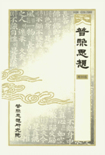학술논문
牧牛子 知訥 思想의 返照와 廻心
이용수 288
- 영문명
- Moguja Chinul and his thought of the panjo hoesim(返照廻心)
- 발행기관
- 보조사상연구원
- 저자명
- 최성렬(Choi seongryul)
- 간행물 정보
- 『보조사상』普照思想 第35輯, 287~312쪽, 전체 26쪽
- 주제분류
- 인문학 > 불교학
- 파일형태
- 발행일자
- 2011.06.30
5,920원
구매일시로부터 72시간 이내에 다운로드 가능합니다.
이 학술논문 정보는 (주)교보문고와 각 발행기관 사이에 저작물 이용 계약이 체결된 것으로, 교보문고를 통해 제공되고 있습니다.

국문 초록
‘牧牛子 知訥’하면 맨 먼저 떠오르는 것이 定慧結社일 것이다. 정혜결사는 그 만큼 知訥, 내지 韓國佛敎 思想史에서 차지하는 비중이 크다는 것이다. 그렇다면 ‘정혜결사’하면 무슨 말이 먼저 생각날까? 필자는 단연코 “땅에서 넘어진 사람은 땅을 짚고 일어난다(因地而倒者 因地而起)”는 말을 들고 싶다. 그는 壬寅(1182)년 정월 普濟寺 談禪法會에서 同學 10여인과 定慧結社를 기약하고, 1190년에는 公山에서 『勸修定慧結社文』을 발표하였다. 이 결사문의 첫 마디가 바로 “땅에서 넘어진 사람은 땅을 짚고 일어난다”는 것이라는 사실에 주목하기 때문이다.
이 논문에서는 그 말의 典據는 물론 그것이 지눌 사상의 핵심- 返照와 廻心- 이라는 것을 밝혔다. 즉 그의 禪敎一致 사상은 『華嚴經』 「如來出現品」에서 그 근거를 찾았고, ‘마음이 부처’라는 것은 李通玄의 『新華嚴經論』에서 확인하게 된다. 그 때가 1185년 普門寺에서 주석하던 때이다. 이로부터 2년 후 『勸修定慧結社文』을 발표하면서 『新華嚴經論』을 다수 인용하여 이론적 틀을 굳건하게 하였던 것이다.
“사람이 땅으로 인해 넘어졌다가 땅으로 인해 일어나는 것과 같아서 일체의 중생도 자기 마음의 根本智로 인해 넘어졌다가 자기 마음의 근본지로 인해 일어나는 것이다.”근본지는 不動智라고도 한다. 動搖하지 않는 분명하고 바른 지혜, 곧 부처님의 지혜이기 때문이다. 그런데 이 지혜를 범부와 성인이 다 가지고 있다는 것이다. 그래서 그는 이렇게 말한다. “일체중생의 마음도 또한 이와 같이 다 如來가 있어 正覺을 이룰 수 있다”거나 “한 생각이라도 妄念이 생기지 않으면 心과 境이 蕩然해져 自性이 스스로 나지 않기 때문에 얻을 것도 없고 證할 것도 없어서 곧 正覺을 이룰 수 있다”고 한다. 이것은 凡夫와 聖人의 마음 자체는 淸淨하여 다름이 없다는 것으로 그가 修心人에게 준 희망의 메시지였던 것이다. 그래서 1207년 『新華嚴經論』을 3권으로 절요한 것이 『華嚴論節要』인 것이다.
모름지기 修心하는 이는 十信의 初心에서 자기 마음이 곧 根本智임을 알고, 그런 다음 그 性品에 의거해서 修禪하라, 그래야 부처의 지위에 오를 수 있다는 것을 因地而倒者 因地而起로 확인시키고, 그것을 返照와 廻心으로 재차 확인시키고 있는 것이다.
그렇기 때문에 “땅에서 넘어진 사람은 땅을 짚고 일어난다”는 것은 단순히 序頭를 장식하는 美辭麗句가 아니라 확신에 찬 그의 메시지요, 定慧結社文, 나아가 그의 핵심사상이라는 것이다.
영문 초록
When you think of Moguja Chinul, the first word that come to mind would be 'Cheong Hye Kyul Sa(定慧結社)'. As for Chinul or the buddhism history of Korea, the proportion of 'Cheong Hye Kyul Sa' is very large. Then, if we think 'Cheong Hye Kyul Sa', what does a idea occur to your mind? I definitely want to hear the phrase that "A person who has fallen to the ground gets up by using that ground. It would be impossible to try to get up without relying on that ground(因地而倒者 因地而起)". In January 1182, Chinul and some ten fellow researchers pledged the 'Cheong Hye Kyul Sa' on the Buddhist ceremony at 'Po Je Sa(普濟寺, Po-Je temple)'. He presented 'Kwon Soo Cheong Hye Kyul Sa Mun(勸修定慧結社文)' in 1190. Because I paid attention to the fact that the first sentence is "A person who has fallen to the ground gets up by using that ground".
This paper presents not only the source of the sentence but also the fact that the sentence is the core idea of Chinul. Namely for his idea, 'Seon Kyo Il Chi(禪敎一致), he found out the basis in 'Yu lae Chul Hyun Pum(如來出現品)', the Avatamska Sutra(華嚴經). And he verified the idea, 'Mind is Buddha', in 'Sin Hwa Eom Gyoung Lon(新華嚴經論)' of Lee, Tong Hyun(李通玄). That was the time that he had stayed at 'Po Mun Sa(普門寺, Po-Mun temple)' in 1185. From which two years later, he streng-thened theoretical framework by presenting 'Kwon Soo Cheong Hye Kyul Sa Mun(勸修定慧結社文)' with many quotations from 'Sin Hwa Eom Gyoung Lon(新華嚴經論)'.
“As a person who has fallen to the ground gets up by using that ground all living beings fall to the ground and get up due to 'Keun Bon Ji(根本智)' of their mind.”Keun Bon Ji(根本智, funda-mental wisdom) is also called Bu Dong Ji(不動智). It is clear and right wisdom without restlessness. In otehr words it is wisdom of Buddha. However, both of an unenlightened person and a holy man have this wisdom. Therefore, he says "Because there is Yeo Lae(如來) in their mind of all living beings, all person can find enlightenment" and "If there is no delusion in mind, you can find enlightenment". This means that both mind of an unenlightened person and a holy man are clear and that there is no difference between them. It's the message of hope that he gave to ascetics. So it is the 'Hwa Eom Lon Jeol Yo(華嚴論節要)' that he summarized 'Sin Hwa Eom Gyoung Lon(新華嚴經論)' into 3 books in 1207.
He confirms that ascetics should know that their mind is Keun Bon Ji(根本智) itself and practice on the basis of the nature, then, they can attain a state of Buddha by the metaphor, a person who has fallen to the ground gets up by using that ground(因地而倒者 因地而起).
Therefore, the metaphor is not rhetorical sentence, but his assured message and a core idea.
목차
국문요약
Ⅰ. 緖論
Ⅱ. 因地而倒者 因地而起
Ⅲ. 『華嚴經』 普光明殿會
Ⅳ. 返照와 廻心 - 땅을 짚고 일어나는 법
Ⅴ. 맺는 말
참고문헌
Abstract
키워드
해당간행물 수록 논문
참고문헌
교보eBook 첫 방문을 환영 합니다!

신규가입 혜택 지급이 완료 되었습니다.
바로 사용 가능한 교보e캐시 1,000원 (유효기간 7일)
지금 바로 교보eBook의 다양한 콘텐츠를 이용해 보세요!





